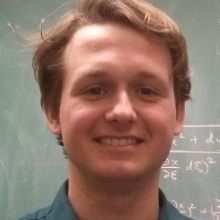Contact
Lindstedtsvägen 25
Stockholm
Sweden
Coupled systems of porous-medium and free flow have received significant attention in recent years due to their wide variety of applications. Prominent examples include the exchange in membrane fuel cells, water evaporation in the drying of soils and textiles, as well as transport of therapeutic agents between capillaries and tissue in the human body.
In the context of modelling these coupled systems, it is crucial to take into account the strong interplay between the different flow regimes at the shared interface. In turn, it is natural to describe the full, coupled system of porous medium flow and free flow in a single, comprehensive model. However, flow through a porous medium is intrinsically different from free-flow. Where the former is often described as a creeping, laminar flow, evolving slowly over long periods of time, the adjacent free flow changes rapidly in a matter of seconds. Due to the different behaviour of
the two subsystems, a fully coupled model typically results in an unbalanced system of equations with extreme scaling ratios. As a result, the system becomes computationally expensive, sometimes even infeasible, to solve in a fully coupled manner.
The main objective of this project is to (i) develop and analyse efficient solution methods for coupled free-flow porous-media flow problems based on iterative decoupling strategies, (ii) implement the proposed methods numerically in a unified software framework, and (iii) extend the approaches to related, more complex flow problems. Two extensions have a central focus within this project, namely the adaptation to multi-rate time stepping and the generalizations to non-linear problems including the use of Navier-Stokes equations in the free flow domain and introducing multi-phase flow in the system.
Multi-rate time stepping is a technique at which components of the model are updated at different moments in time. The idea is that rapidly changing processes, such as turbulent flow, require a high resolution in time whereas processes that change gradually through time, porous media flow in this case, can be described accurately using longer time steps. However, due to the mutual dependencies between the two flow fields, the calculation of their evolution through time becomes a challenging task. In particular, additional care is required to ensure that principles such as conservation of mass and momentum are preserved.
A key challenge in this project is to ensure that the efficiency of the developed solution method is independent of the physical parameters and size of the problem. Ideally, the proposed method performs equally well for small resolutions both in time and in space and is moreover not affected by the magnitude of the fluid's viscosity or the permeability of the porous medium. A wide applicability of the proposed method is essential before it can serve as a solid basis for generalizations to more complex models. In this project, we aim to achieve such robustness by focusing on iterative methods that respect the underlying physical structure of the flow processes.
This is a joint project with Carina Bringedal.


